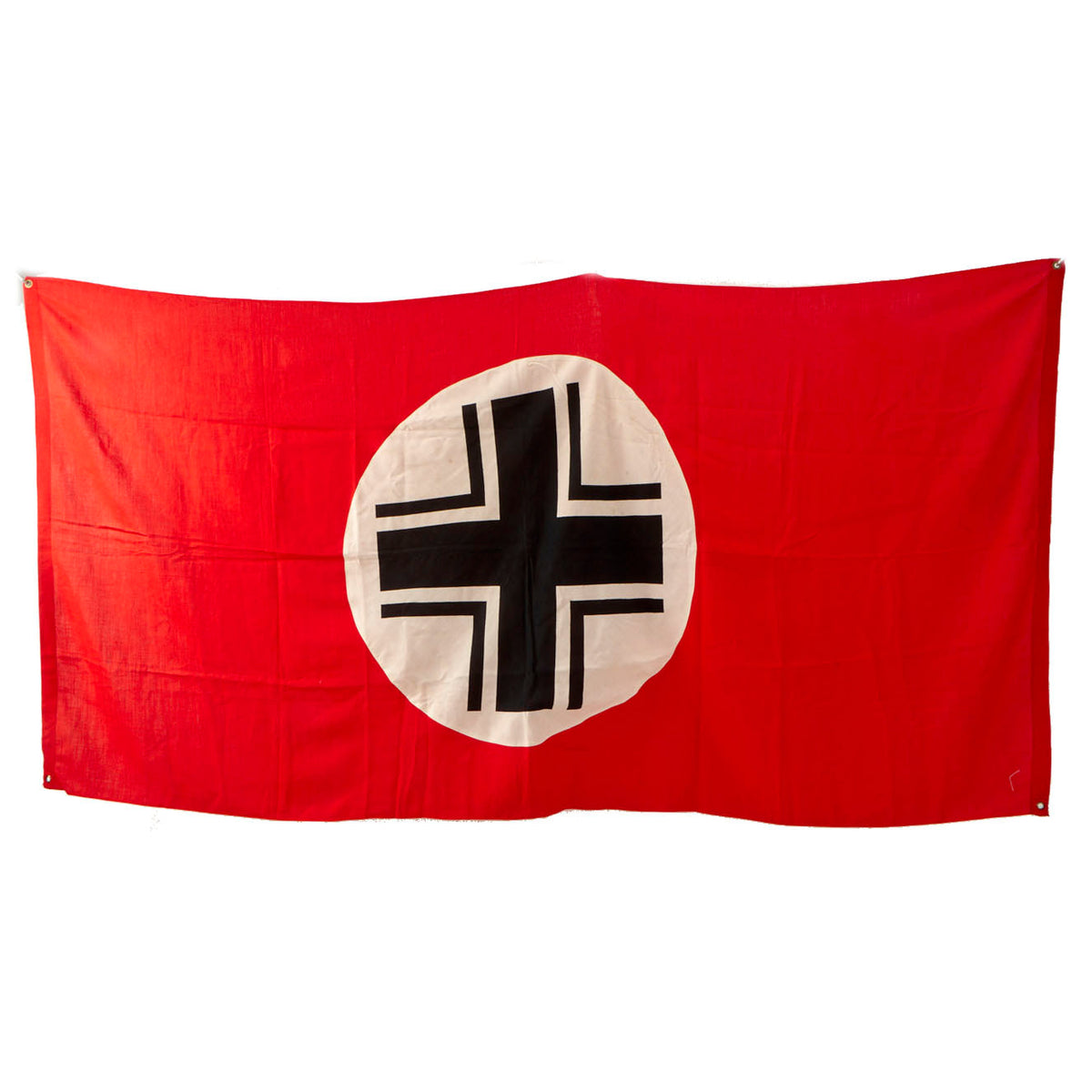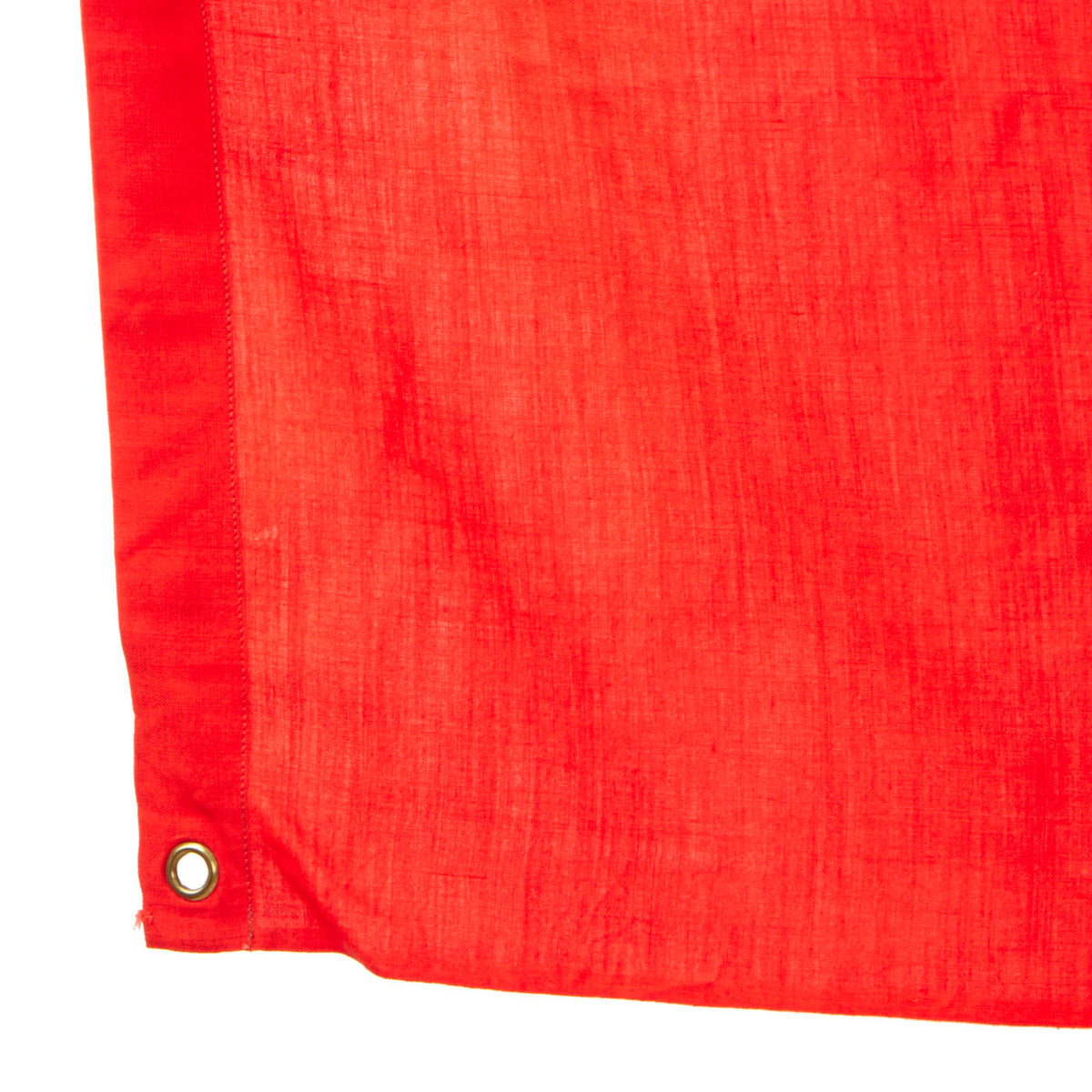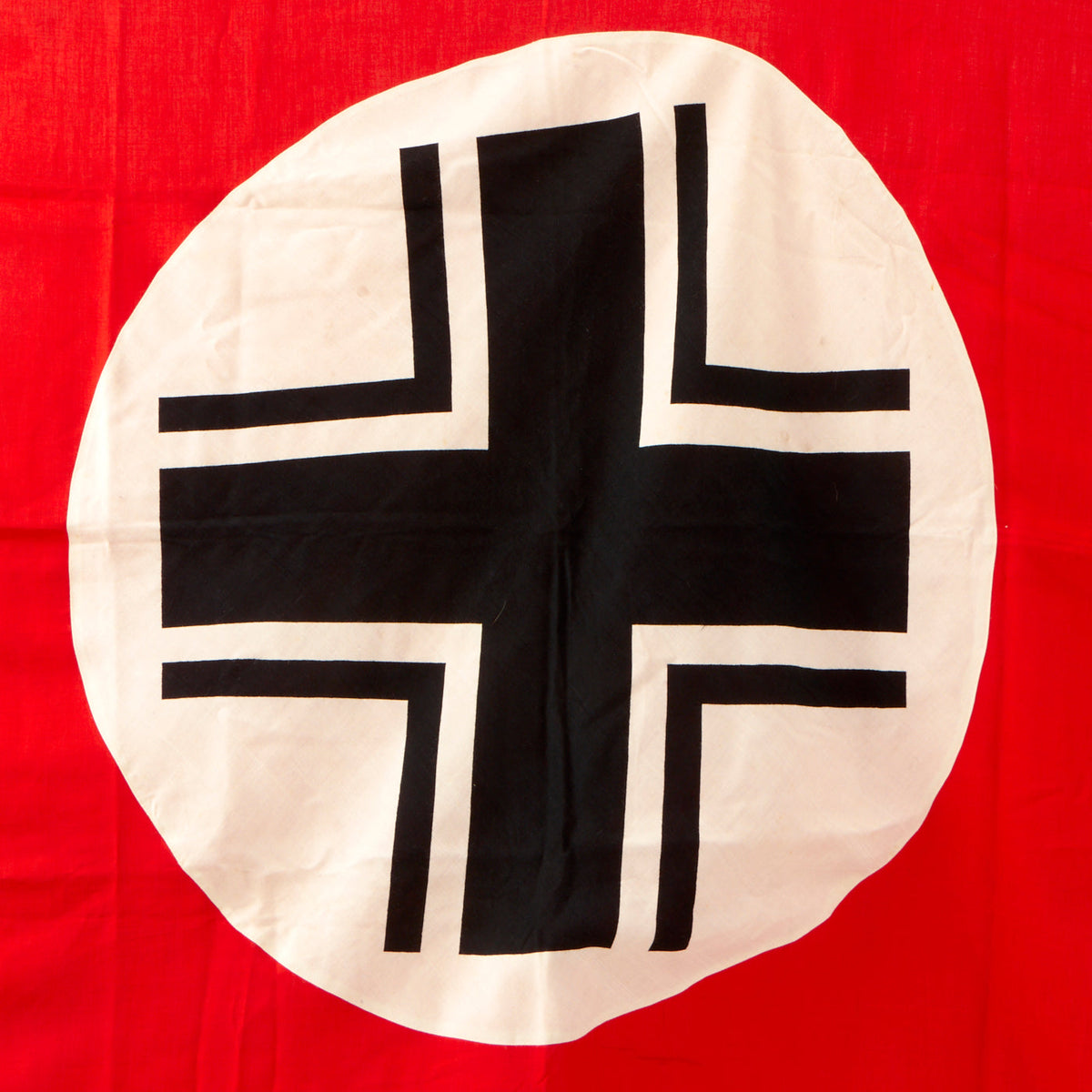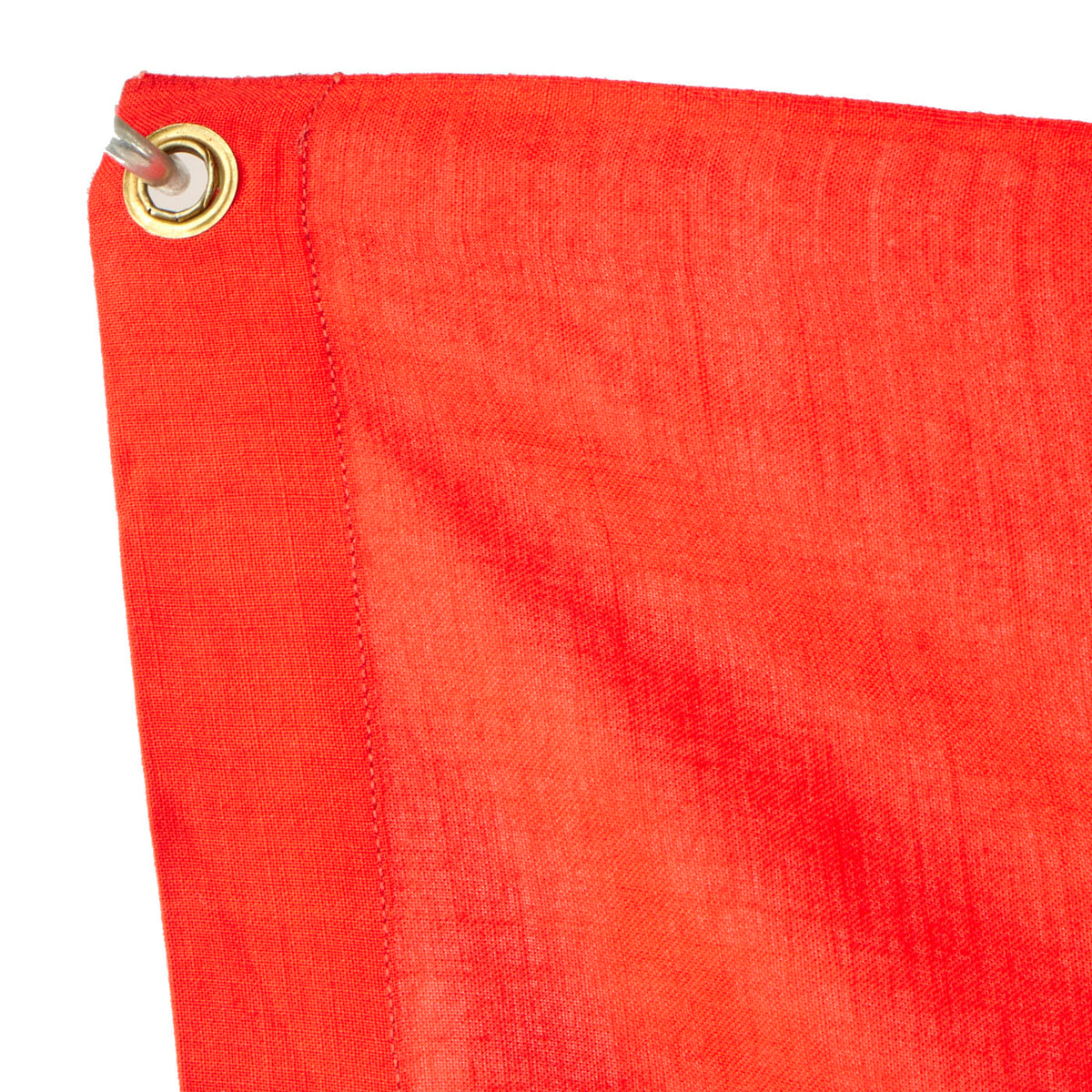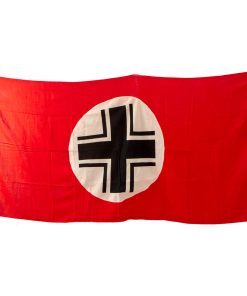Original German WWII Balkenkreuz (Beam Cross) Tank Identification Flag – MINT – 40″ x 75″ Original Items
$ 625,00 $ 187,50
Original Item: One-of-a-kind. This is a very nice condition cotton multi-piece construction German WW2 Balkenkreuz (Beam Cross) Panzer tank identification flag that measures approximately 40 x 75 inches.
This cotton flag features multi-piece construction and is single sided with grommets located in each corner. These grommets were secured to tension lines that secured the flag to the back of the tank laying flat. Thereby the flag was only visible to persons located above the tank. Generally these flags were intended to be seen by German airplanes so as not to be struck by friendly fire.
Most German tanks were destroyed during combat, so very few of these flags remained at the end of the war and most known examples were directly removed from tanks by USGIs in the field.
This is a wonderful MINT condition example and comes ready to display!
The Balkenkreuz (lit. '”beam cross” or “bar cross”‘) is a straight-armed cross that was first introduced in 1916–1918 and later became the emblem of the Wehrmacht (German Armed Forces) and its branches from 1935 until the end of World War II. It was used by the Wehrmacht Heer (Army), Luftwaffe (Air Force), and Kriegsmarine (Navy).
Germany’s Luftstreitkräfte (the army air service of the German Imperial Army) first officially adopted the Balkenkreuz in mid-April 1918 (about a week before the death of Manfred von Richthofen), and used it from that time until World War I ended in November 1918. The IdFlieg directive of 20 March 1918 to all manufacturers states in the first sentence (translated to English): “To improve the recognition of our aircraft, the following is ordered:”. In paragraph 2, the second sentence specifies: “This alteration is to be carried out by 15 April 1918.” The closing sentence reads: “Order 41390 is to be speedily executed.”
Its use resumed, with new standardized dimensions, from the beginning of the NSDAP Germany’s air force (the Luftwaffe) in 1935, as part of the new Wehrmacht unified German military forces founded in mid-March 1935. German armored fighting vehicles (AFVs) during the invasion of Poland (September–October 1939) used a plain white cross, but before the onset of Operation Weserübung (April 1940), the black core cross with white “flanks” that the Luftwaffe used had become the basic German AFV national insignia, as used for the rest of the war (to 1945).
The Luftwaffe would use two specifications for the Balkenkreuz:
- One with narrower white “flanks” on upper wing surfaces – before July 1939, it was used in all six regular positions on an airframe
- One with wider white “flanks” surrounding the same width (25% wide as long from end to end for both versions) central black cross beneath the wings and on the fuselage sides of German military aircraft during the war years
Late in World War II it became increasingly common for the Balkenkreuz national insignia to be painted on without the black-color “core cross”, using only the quartet of right-angled “flanks” for its form to reduce its visibility – this could be done in either white or black, and with both the narrow and wide-flank forms of the cross.
The Iron Cross used by today’s German Bundeswehr unified defense forces inherits the four white, or lighter-colored, carved “flanks” of the older Balkenkreuz that do not “cap” the ends of the cross in either case, but with the “flanks” following the flared arms of the earlier German Empire’s cross pattée (Eisernes Kreuz/iron cross) instead, from the 1916-1918 era.
The straight corners were only used by Wehrmacht.
Fast Shipping with Professional Packaging
Thanks to our longstanding association with UPS FedEx DHL, and other major international carriers, we are able to provide a range of shipping options. Our warehouse staff is expertly trained and will wrap your products according to our exact and precise specifications. Prior to shipping, your goods will be thoroughly examined and securely secured. We ship to thousands clients each day across multiple countries. This shows how we're dedicated to be the largest retailer on the internet. Warehouses and distribution centres can be located throughout Europe as well as the USA.
Note: Orders with more than one item will be assigned a processing date depending on the item.
Before shipping before shipping, we'll conduct a thorough inspection of the items you have ordered. Today, the majority of orders will be delivered within 48 hours. The delivery time will be between 3-7 days.
Returns
The stock is dynamic and we cannot completely manage it because multiple stakeholders are involved, including our factory and warehouse. So the actual stock may alter at any time. It's possible that you may not receive your order once the order has been made.
Our policy is valid for a period of 30 days. If you don't receive the product within 30 days, we are not able to issue a refund or an exchange.
You can only return an item if it is unused and in the same state as the day you received it. You must have the item in its original packaging.
Related products
Uncategorized
Uncategorized
Uncategorized
Band of Brothers ORIGINAL GERMAN WWII Le. F.H. 18 10.5cm ARTILLERY PIECE Original Items
Uncategorized
Uncategorized
Uncategorized
Angolan Rebel 1970s era 60mm Inert Display Mortar from Angolan Civil War Original Items
Uncategorized
Uncategorized
Uncategorized
Uncategorized
Uncategorized
Armoured Fighting Vehicles of the World: AFVs of World War One (Hardcover Book) New Made Items
Uncategorized
Uncategorized
Uncategorized
Uncategorized
Uncategorized
Australian WWII Owen MK1 Machine Carbine SMG Custom Fabricated Replica with Sling Original Items
Uncategorized
Armored Burgonet Helmet & Polearm from Scottish Castle Leith Hall Circa 1700 Original Items
Uncategorized
